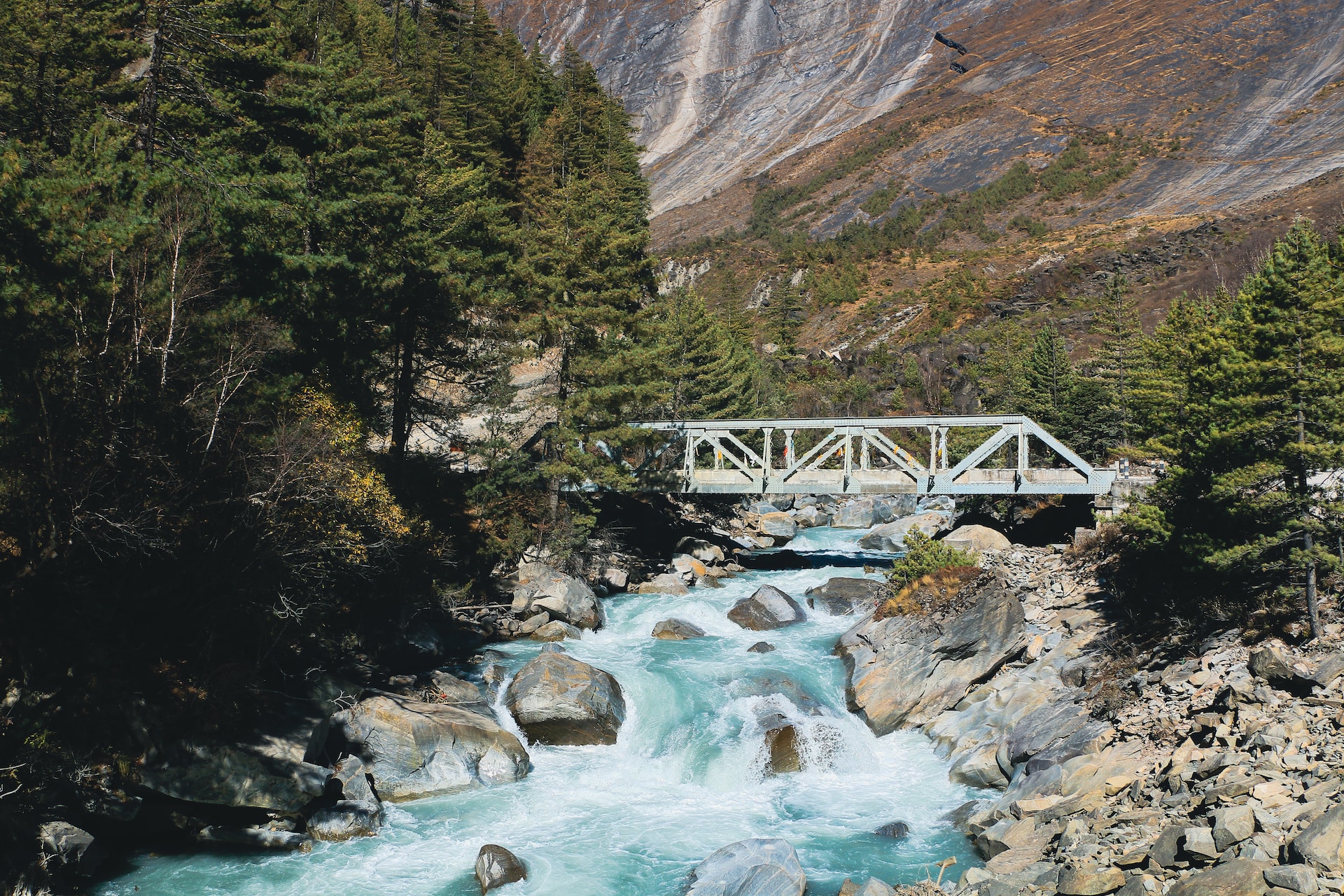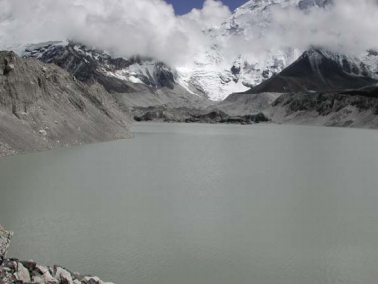Case-study /
An Overview of Glaciers, Glacier Retreat, and Subsequent Impacts in Nepal, India and China

Introduction
Climatic changes and its impacts on the fluctuation of glaciers are a natural phenomenon that has been occurring in the Earth’s five billion-year-old history. In the past few decades, global climate change has had a significant impact on the high mountain environment: snow, glaciers and permafrost are especially sensitive to changes in atmospheric conditions because of their proximity to melting conditions. In fact, changes in ice occurrences and corresponding impacts on physical high-mountain systems could be among the most directly visible signals of global warming. This is also one of the primary reasons why glacier observations have been used for climate system monitoring for many years (Haeberli 1990; Wood 1990).
This weADAPT article introduces the original text, which can be downloaded from the right-hand column. Please access the original text for research purposes, full references, or to quote text.
Overview of the problem
The New Scientist magazine carried the article “Flooded Out – Retreating glaciers spell disaster for valley communities” in their 5 June 1999 issue. It quoted Professor Syed Hasnain, then Chairman of the International Commission for Snow and Ice’s (ICSI) Working Group on Himalayan Glaciology, who said most of the glaciers in the Himalayan region “will vanish within 40 years as a result of global warming”. The article also predicted that freshwater flow in rivers across South Asia will “eventually diminish, resulting in widespread water shortages”. As apocalyptic as it may sound, it needs to be underlined that glaciers need to be studied for a variety of purposes including hazard assessment, effects on hydrology, sea level rise and to track climatic variations. There are several problems associated with retreating glaciers that need to beunderstood in order to proceed to the next stage of quantifying research and mitigating disaster.In this context it would be imperative to understand the nature of problems that confront Nepal,India and China. While the following section deals with problems faced by all three countries,country-specific losses and details would be dealt with separately.
Agriculture
In an agrarian country like Nepal, with staggering increase in population and food demand, even a slight decline in annual food production is a matter of great concern. This sector is adversely affected by the loss of top fertile soil due to soil erosion, landslides and floods. Soil loss is a major cause of decline in agriculture production in Nepal and the negative effects of climate change may further aggravate this situation. It has been suggested that at 4ºC temperature and 20 percent precipitation rise, there could be marginal yield increase in rice; that yield will continue to decline between 0.09 to 7.5 percent and beyond. However, temperature rise has evoked mixed reactions in the case of wheat as the actual yield of wheat has increased in the western region with the rise in temperature while there has been a decline in other regions. Similarly, a rise in temperature has a negative effect on maize as yields decreased with warmer temperatures (the trend is almost similar to wheat).
Biodiversity and wildlife
A majority of the people in Nepal rely on forest products such as firewood, food, fodder, timber and medicines. Its extensive utilization and increasing demand has led to a decline both in areaand quality. Global warming may cause forest damage through mitigation of forests towards thepolar region, change in their composition and extinction of species. This could affect not only onNepal’s biodiversity but the very livelihoods of people. Tropical wet forests and warm temperaterain forests would disappear, and cool temperate vegetation would turn to warm temperatevegetation. Vegetation patterns would be different under the incremental scenario (at 2ºC rise oftemperature and 20 percent rise of rainfall) than the existing types. Thus climate change willhave a direct impact on vegetation, biodiversity and even wildlife.
Health
The risk of malaria, kalaazar and Japanese encephalitis is suggested under climate change scenarios for Nepal. The subtropical and warm temperate regions of Nepal would be particularly vulnerable to malaria and kalaazar. Similarly, an increase of temperature would make the subtropical region of Nepal more vulnerable to Japanese encephalitis. While climate change model results are highly variable concerning South Asia, the projections for temperature change are more or less consistent and significant with projected mean temperature increase of 1.2 and 3ºC by 2050 and 2100 and 2.3 to 4.3ºC at 2 CO2. Though an overall increase in precipitation is projected; the magnitude of change is low. The observed trends in temperature generally agree with climate model results and show warming in the last few decades. More warming is observed in high altitudes. No significant trend is found in precipitation. Both temperature and precipitation are found to be related to large-scale climatological phenomena.

Photo: Imja Tsho in 2004 (Credit: WWF Nepal Programme)
Conclusion
It is imperative to make vulnerability assessments of different development sectors and devise adaptation plans. Climate change impacts and responses are transboundary issues. Therefore, in addition to national discourses on linkage between climate change, mitigation and adaptation measures and development efforts, regional collaboration is necessary to formulate co-coordinated strategies.
